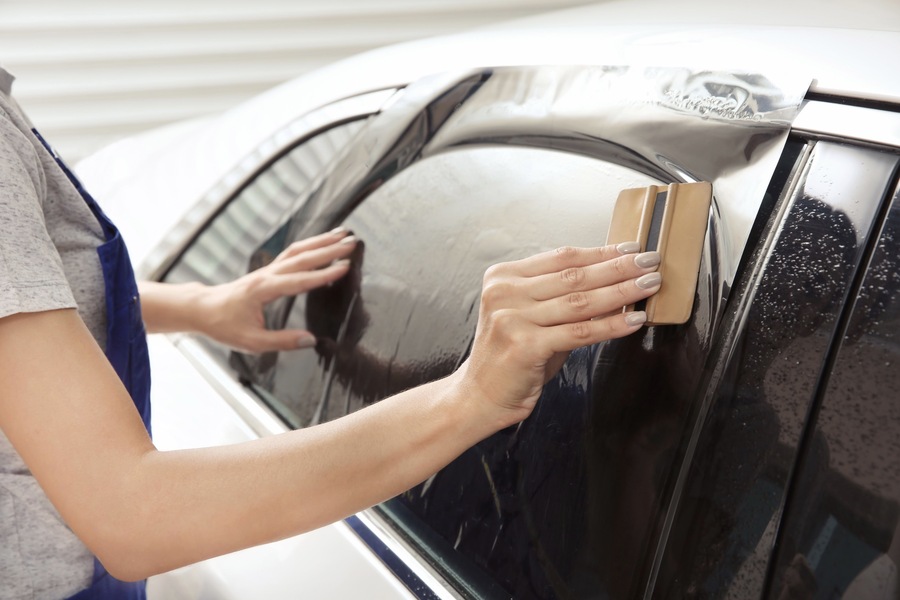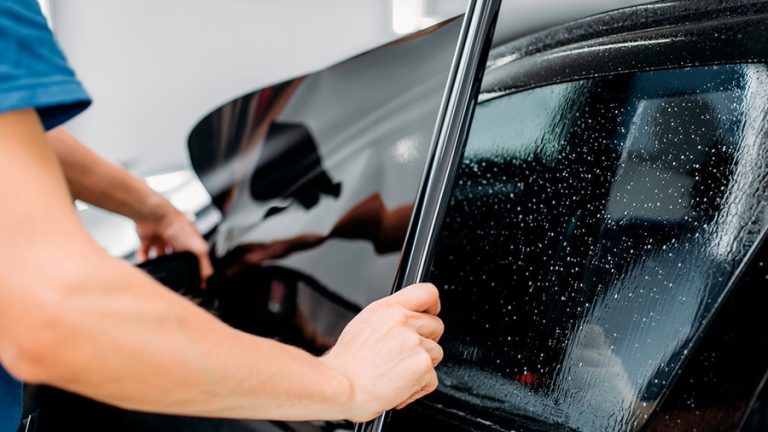Car tinting, the alteration of light transmission, color, and reflective properties of car windows, has become increasingly popular among vehicle owners. This process includes various methods such as factory darkening of glass by spraying, applying different types of films, and using frame and retractable blinds, curtains, and other means. Here’s an in-depth look at car window tinting, its benefits, types, and regulations across different countries.
Benefits of Car Tinting
1. Attractive Appearance: Tinting can significantly enhance the aesthetic appeal of a car, making it look more presentable and sleek. Additionally, it can hide defects on the glass, contributing to a cleaner and more polished look. This improvement in appearance can also increase the vehicle’s resale value, as a well-maintained and stylish car attracts more buyers.
2. Protection from Solar Radiation: Tint films are capable of blocking up to 99% of ultraviolet (UV) rays. This not only helps prevent the fading of the car’s interior but also protects passengers’ skin from harmful UV exposure. UV radiation can cause significant damage over time, including cracked dashboards, faded upholstery, and deterioration of leather seats. By blocking these rays, tinting extends the lifespan of your car’s interior.
3. Increased Comfort While Driving: Tint films possess heat-filtering properties that reduce the heat inside the car during hot weather. This helps maintain a cooler cabin temperature, enhancing overall driving comfort. Additionally, a cooler interior reduces the need for air conditioning, which can improve fuel efficiency and reduce the vehicle’s environmental impact.
4. Confidentiality and Safety of Belongings: By obstructing the view of the car’s interior, tinting provides an added layer of privacy and security. This can help deter potential thieves by making it difficult to see valuables inside the vehicle. For those who frequently carry valuable items, such as laptops, cameras, or shopping bags, tinting offers peace of mind by keeping these items out of sight.
5. Anti-Glare and Increased Safety: Tint films reduce glare from sunlight and other bright lights, improving driver visibility and reducing the risk of accidents. Glare from the sun or headlights of oncoming vehicles can be a major distraction and safety hazard. By minimizing glare, tinting helps drivers maintain better focus and reaction times, especially during dawn, dusk, and nighttime driving.

Types of Car Tinting
1. Athermal Tinting: Designed primarily to protect occupants from heat, athermal tinting prevents the seats and other interior components from fading due to sunlight exposure. This type of tinting uses advanced materials that block infrared radiation, which is responsible for heating up the car’s interior.
2. Mirror Tinting: This type of tinting involves applying a film that creates a mirror-like surface on the glass. While it offers excellent privacy and heat rejection, it is important to note that the use of mirror tinting is prohibited in Russia and some other countries according to GOST 32565-2013 and clause 7.3 of the traffic rules. Drivers should check local regulations before opting for mirror tinting.
3. Colored Tinting: Films with various tints are applied to car windows to achieve a desired color effect. This type of tinting allows for personalization and can complement the car’s exterior color. However, it’s crucial to ensure that the chosen color complies with legal standards for visibility and safety.
4. Art Tinting: Special prints or designs are applied to the glass, often allowed on side windows and sometimes on the corners of the rear window. Art tinting offers a unique way to personalize a vehicle, allowing for custom graphics, logos, or patterns. This type of tinting is popular among car enthusiasts and businesses that want to brand their vehicles.
5. Chameleon Tinting: This type of tint changes color depending on the viewing angle and lighting conditions. If the light transmittance meets legal standards, chameleon tinting is usually permitted. This dynamic effect not only adds a stylish flair but also provides the functional benefits of standard tinting.
6. Standard Tinting: Applied during the manufacturing process, standard tinting involves embedding toner between the glass layers or adding it to the glass mixture. This type of tinting is typically more durable and evenly distributed, providing consistent performance over the life of the vehicle.
Regulations on Car Tinting
Different countries have varying rules and restrictions regarding car tinting:
– United Kingdom: The windshield must transmit at least 75% of light, and the front side windows at least 70%. There are no restrictions on rear window tinting. These regulations ensure that drivers have a clear view of the road while allowing flexibility for privacy in the rear of the vehicle.
– Denmark: Windshields must have 75% light transmittance, front side windows 70%, and rear side windows at least 40%. This balance aims to provide adequate visibility for safety while allowing some level of tinting for comfort and privacy.
– Poland: The windshield must transmit 75% of light, and side windows 70%. Rear windows can be tinted without restrictions. This approach focuses on maintaining clear visibility for the driver and front passengers while offering more freedom for rear window tinting.
– France: Tinting the windshield and front side windows is prohibited, except for a darkening strip no more than 10 cm wide at the top of the windshield. This strict regulation prioritizes maximum visibility for safety, especially in densely populated areas.
– Sweden: Windshields can be tinted with at least 75% light transmittance, while other windows must have at least 70%. These standards ensure a clear view for the driver while providing some comfort and UV protection.
– Netherlands: Front windshields cannot be tinted, but side and rear windows have no restrictions. This regulation allows for privacy and heat reduction in the rear of the vehicle while maintaining clear forward visibility.
– UAE: Tinting of side and rear windows should not exceed 50%, while windshields cannot be tinted. Previously, only 30% tinting was allowed, but this was increased in 2017 due to the harsh summer conditions. Violations of the 50% limit can result in a fine of AED 1,500, although exceptions are possible with prior approval from the Roads and Transport Authority (RTA) or Dubai Police. These adjustments reflect the need for enhanced heat protection in the UAE’s extreme climate.

Choosing the Right Tint
When selecting a tint, it’s important to consider both legal restrictions and personal preferences. Consulting with a professional tinting service can help ensure compliance with local laws and achieve the desired balance of aesthetics, comfort, and functionality.
Material Quality: High-quality tint films last longer, provide better UV protection, and resist fading and bubbling. Investing in a reputable brand can save money and hassle in the long run.
Professional Installation: Proper installation is crucial for achieving a flawless finish and ensuring the tint adheres correctly. Professional installers have the experience and tools to apply tint films smoothly and without defects.
Maintenance: Tinted windows require specific cleaning products to avoid damaging the film. It’s important to follow maintenance guidelines provided by the tint manufacturer or installer to prolong the life of the tint.
Conclusion
Car tinting offers a range of benefits, from enhancing the vehicle’s appearance and providing privacy to protecting against harmful UV rays and reducing heat inside the car. However, it’s essential to comply with local regulations regarding the permissible level of tinting. By understanding the various types of tinting and their benefits, car owners can make informed decisions to improve their driving experience and ensure their vehicle remains stylish and comfortable. Whether you are seeking better aesthetics, increased comfort, or enhanced privacy, car tinting is a valuable upgrade for any vehicle.

She worked for eleven years as a writer and editor at the national news biweekly WORLD magazine
